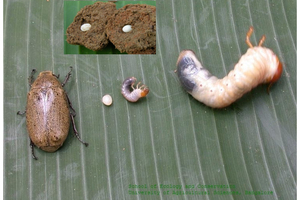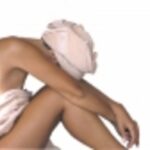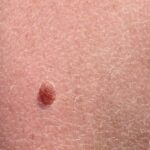White grubs are known to cause massive amounts of damage to South Georgia lawns. I got to see just how much damage when our lawn became infested with them last year. The grubs also tend to attract star-nosed moles, which only add to a lawn’s downfall. Our lawn was plagued with those as well. Here’s how to know if your lawn is in jeopardy:
1. Beetles Sightings
Grubs are the offspring of beetles. So if you start seeing a large number of beetles on your lawn in the summer, beware. There is a good chance that it will lead to an infestation of white grubs the following spring. We started finding Northern Masked Chafers and Sugarcane Beetles near our porch lights. Being a transplanted New Yorker, I didn’t equate them with impending doom for our lawn. I know better now. The sugarcane beetles are black in color and the Northern Masked Chafers are brown. Both are attracted to porch lights, so look for sightings of them there. The sugarcane beetles are particularly nasty because they will burrow into the ground as well as the caulk around your windows and asphalt roofing shingles.
2. Brown Spots
Strong sun, watering restrictions and long periods of time without substantial rainfall will often cause yellowish brown spots in a South Georgian’s lawn. Therefore, when I first noticed the brown spots in our lawn, I wasn’t savvy enough to associate them with the influx of beetles. We had been having a hot, dry summer, so I had just chalked the brown spots up to the weather. Don’t make the same mistake that I did. Those yellowish brown spots could also mean that your lawn has a white grub infestation.
3. Grass Rubs Off
Another tell-tale sign of a white grub infestation are patches of grass that separate from the ground when you walk. You can literally wipe away sections of your lawn with your feet. At that point, I knew that our lawn was in big trouble. I just wasn’t sure why. One way to narrow it down is to turn over some soil in those areas. If you find big, nasty, white grubs with red dots on their heads under the soil, it will be clear what is ailing your lawn.
4. Spongy Soil
Spongy soil is another clear indication that you have a white grub infestation. Imagine what it would feel like to walk on your couch cushions. Well, that’s what it will feel like to walk on your lawn when it’s infested with white grubs. I had never experienced anything like that in my life until last summer. Not only will the ground feel spongy, you’ll also leave deep impressions in the soil when you walk.
5. Tunnels and Mounds
Remember the movie “Tremors” with the creatures that would burrow close to ground level and then pop out and eat people? Star-nose moles leave similar, tell-tale signs. I started seeing these odd tunnel shapes all over the lawn. There were little volcano shaped mounds of dirt as well. When I went to investigate, this odd looking creature popped out of one of them. It was tiny and had a furry tail. It turned out to be a star-nosed mole. It was using the tunnels to feed on the white grubs. I should also warn you that the tunnels appear fast. Your lawn could be tunnel free one day and look like a mess the next. Part of the reason why is that the creatures are known to excavate one foot of surface tunnel in as little as one minute. Once they start tunneling, it is hard to stop them.
Killeen Gonzalez lives in South Georgia with her family and has traveled extensively.
More from this contributor:
5 Routine Gutter Maintenance Tasks for Homeowners
Best 5 Campgrounds in the Fort Myers, Florida, Area
Top 5 Show-Stopping Bathtub Designs
How to Repair a Venetian Blind



